Find out how to visit the Terracotta Army near Xi'an China by public transit. See the faces of the Terracotta army. Explore things to do in Xian city.
Did you know that you can take a step back in time and visit the Terracotta Army in Xi'An, China? The Terracotta Amy and Emperor Qin Shi Huang's Mausoleum is a UNESCO World Heritage site and unquestionably the top thing to see in Xi'an.
We visited Xi'an China to see the ancient terracotta army as part of an extended six week trip through Asia (#DrJSabbatical).
China has a population of nearly 1.4 billion people and more and more domestic tourists visit popular destinations each year. The historic and well-preserved terracotta warriors date back to 200 B.C. and depict the armies of the first emperor of China, Qin Shi Huang.
The Terracotta Warriors are an impressive site, but needless to say, it can be very crowded to visit. We found that for tourist attractions like the Terracotta Army, we had to adopt a guerrilla tourism mindset to get through the experience.
Read on to find out more about what I mean by guerrilla tourism and how it played out for us in Xi'an.
Guerrilla Tourism Defined
What's guerrilla tourism? It's when a place is so crowded that you need to jockey for position to get the best photos, often elbowing folks out of the way to do so. In turn, those around you are trying to elbow their way in.
You get in, get the shot, and get out again... It can feel like you are fighting an army of tourists.
As you can see from these photos around Pit 1 of the Terracotta Army we needed to be in full-on guerrilla tourism mode.
Visiting the Terracotta Army by Public Transportation
Continuing our trend of traveling in China's urban centers by public transportation, we decided to take the bus from Xi'an to the Terracotta Army.Once again, we were able to use Google Maps with Express VPN to figure out which local bus would take us to the central train station and bus depot. Google Maps is blocked in China but it if you use a VPN, you can access public transit directions in Xi'an.
China Travel Guide (our go-to resource for planning our trip to China) recommended taking tourist bus #306. For 7 CNY (about $1 USD at the time of writing), you can get from the center of Xi'an to the Terracotta Army in about an hour.
China Travel Guide (our go-to resource for planning our trip to China) recommended taking tourist bus #306. For 7 CNY (about $1 USD at the time of writing), you can get from the center of Xi'an to the Terracotta Army in about an hour.
An Introduction to the Terracotta Warriors in Pit 3
Many of the tips that we read about Xi'an's Terracotta Army suggested visiting the covered archeological pits in reverse order. Start with Pit 3.
It's the longest walk but the smallest pit. Pit 3 has some nice examples of terracotta warriors with chariots and the associated terracotta horses.
An Active Archeological Dig in Pit 2
We moved on to Pit 2 as our second stop. Pit 2 was really confusing to us.The pit itself is an active archeological dig. Depending on when you visit, there may or may not be much to see.
We saw all manner of terracotta warrior pieces awaiting restoration and preservation.
Pit 2 also features a variety of terracotta warriors behind glass that you can view up close to see how truly life-sized they are plus the intricate details of their clothing which differ depending on their role in Qin Shi Huang's army.
The terracotta warriors under glass definitely put us into another guerrilla tourism situation. Tourists would crowd around the chambers to try and get a glimpse. With a bit of effort (and a pinch of patience), I was able to approach the glass and see for myself.
Getting the Shot by Applying Guerrilla Tourism Tactics
Pit One is by far the most impressive of the Terracotta Army's covered archeological sites. It's also, as you might expect, the most crowded.
Pit 1 contains over 6000 life-sized figures that seem to be emerging from the rock. We found ourselves in a constant fight against invasive selfie poles and in a battle of will against other tourists to get and hold a spot along the railing.
The Star Attraction in Pit 1
I'm pleased to say that I fought the good guerrilla tourism fight and managed to get some amazing pictures of the Terracotta Army.
Bring a camera with a good zoom lens (my Canon Powershot SX60 HS has a 65x optical zoom).
Each warrior is dressed according to their role. Some of the warriors look like they should be holding reins. These are the chariot drivers. The reins themselves and the chariots have long since disintegrated.
Every one of the terracotta warriors has a different face and expression. I often wondered who the artists used for inspiration.
Did they have real members of the army sit for them and thus they are immortalized more than 2000 years in the future? Did the artists carve from memory people they'd seen on the street? Maybe members of their family?
The sheer scale of the Terracotta Army is truly awe-inpiring.Is the Terracotta Army Worth Visiting?
When traveling, it's nice to avoid touristy spots but in some cases, you just can't. The Terracotta Army near Xi'an is billed as the 8th Wonder of the World.
It's worth a little inconvenience from the crowds and having to adopt the guerrilla tourism mindset to see this marvel of the ancient world and get some great photos.
What Are Some Other Fun Things to do in Xi'an?
Xi'an may be best known as the home of the ancient Terracotta Army, but is Xi'an city itself worth visiting?
We discovered that Xi'an is a buzzing city with lots going on. Check out some of the fun things to do in Xi'an after you've visited the terracotta warriors.
SIDEWALK SAFARI SPOTLIGHT: Did you know that the UNESCO World Heritage Ancient City of Pingyao is worth visiting and is an ideal stopping off point to break up the journey between Beijing and Xi'an?
|
1. Eat Your Way Through Xi'an's Muslim Quarter
Xi'An was the eastern terminus of the Silk Road and this privileged position led to an amazing depth and variety of cuisine. Take yourself on a self-guided food tour of the area.
Xi'an's Muslim Quarter is a sight to behold. Street food vendors line the main strip making some of the freshest food you'll find. We saw several butchers carving out meat for skewers on the spot.
Other vendors work their dough with theatrical flair.
Soups and dumplings steam in pots heated over open flames.We stopped for dinner at a dumpling place along the main street in the Muslim Quarter. Each one was filled with meat and soup and served with a spicy sauce.
SIDEWALK SAFARI SPOTLIGHT: Looking for other great places in Asia for great food? Read about all the delicious things to eat in Taiwan and what to eat in Japan.
|
2. Pop by Xi'an's Bell Tower
The Bell Tower in Xi'an sits in the middle of a very busy traffic circle. Fortunately, you buy your ticket and gain access to the Bell Tower through the underground passage connecting the metro and various points in the city center.
The Bell Tower has impressive painted columns. When we visited, there was a display of period furnishings and artwork being exhibited. Historically, the bell was struck at dawn to mark the sunrise.
3. Visit Xi'an's Drum Tower
Xi'an's Drum Tower is worth a quick visit. Admire the architecture and period furniture inside; the Drum Tower in Xi'an dates back to 1830. Historically, the drums were beaten at sunset to mark the end of the day.
4. Watch the Swifts Dart About Xi'an at Sunset
Speaking of sunset, Xi'an offered us a few beautiful evenings. In particular, we had an amazing time watching swifts dart in and out of the eaves of the Drum Tower at dusk.
5. Check out the Gates to Xi'an After Dark
Xi'an simply lights up after dark. Check out the bastions of the intact ancient city wall. Both the Bell and Drum Towers in Xi'an are also impressively lit when the sun goes down. It's like visiting a different city.
6. Have a Craft Beer at Xi'an Brewery
Xi'an is a university town and we saw way more westerners than we had in other parts of China as a result. Inside Xi'an Brewery, we could also imagine we were in a western city drinking a craft beer.
Xi'an Brewery makes a variety of their own beers in house. Pints are served up with the spiciest peanut snack mix I've ever had. Yum.
We visited on a weekend evening and a band was playing a mix of jazz and popular music from the U.S. It was a little disconcerting to hear singing in English when we'd encountered so few English speakers in our nearly 2 weeks in China.7. Experience the Xi'an Fountain Music Show
Chinese cities love to put on an over-the-top show light or water show and Xi'an was no exception. We made the pilgrimage to the world's largest fountain show in Xi'an near the Giant Goose Pagoda and got to watch water dance for about 15 minutes.
8. Explore the Giant Wild Goose Pagoda
While we were in the neighborhood, we bought a ticket and went inside the Giant Wild Goose Pagoda. The pagoda itself was build more than 1350 years ago in 652 and is a Buddhist temple. The grounds surrounding the temple are a lovely spot for a peaceful walk.
Summing Up: Is Xi'An Worth Visiting?
Xi'an is definitely a bucket list destination based on the presence of the ancient Terracotta Warriors Museum alone. That said, Xian is so much more than just its ancient history.
How long should you spend in Xi'An? It's easy to fill a 3 days in Xi'an with great food, cultural sites, and more. Definitely make time for a visit to this vibrant Chinese city.



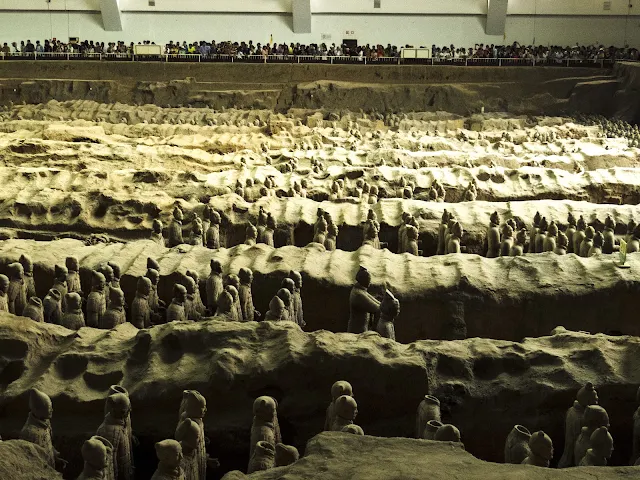
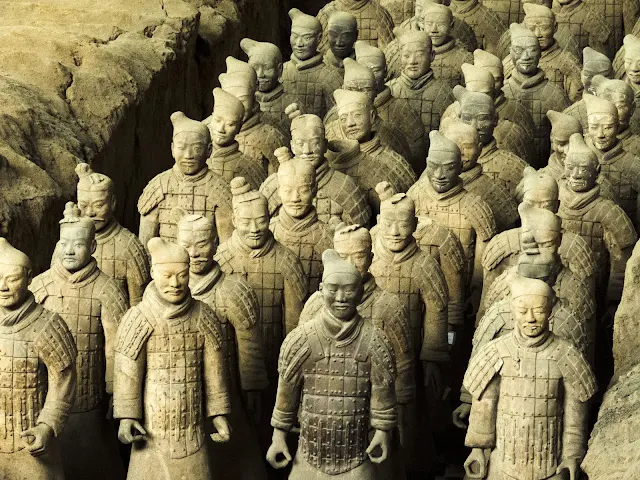
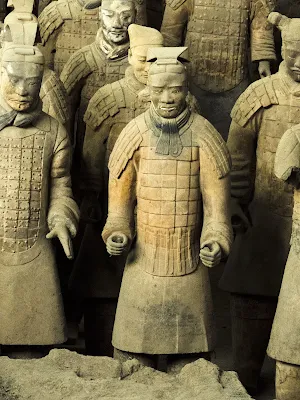
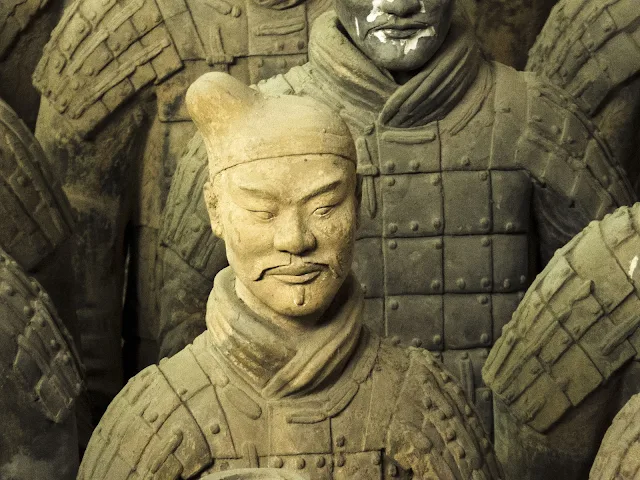
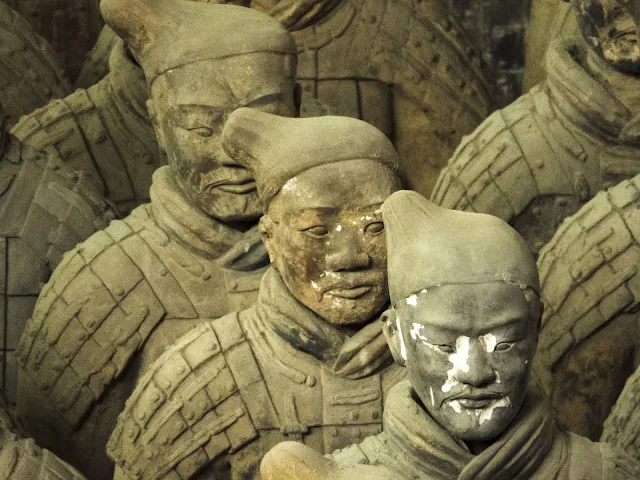




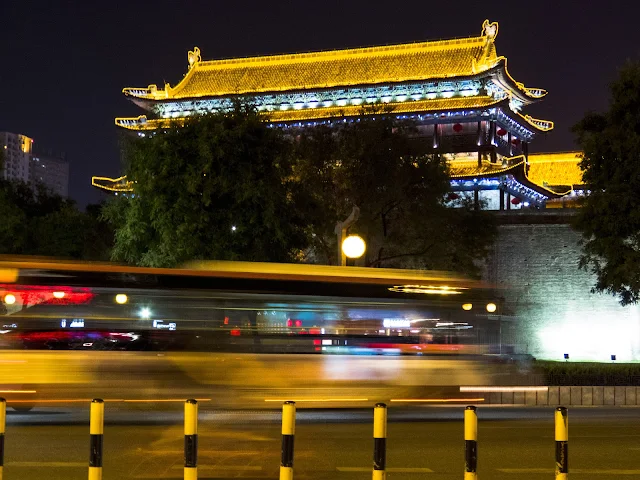
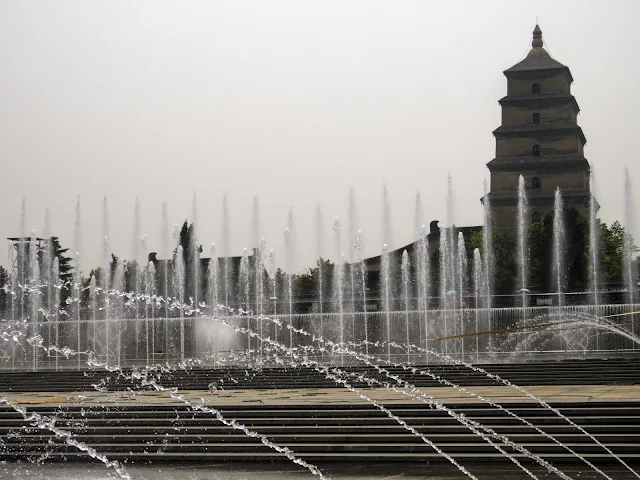

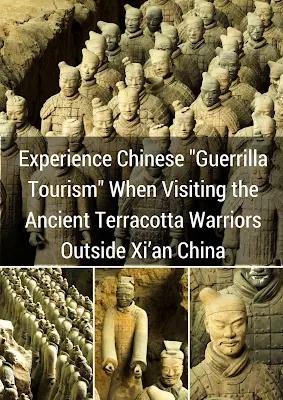
.jpg)
